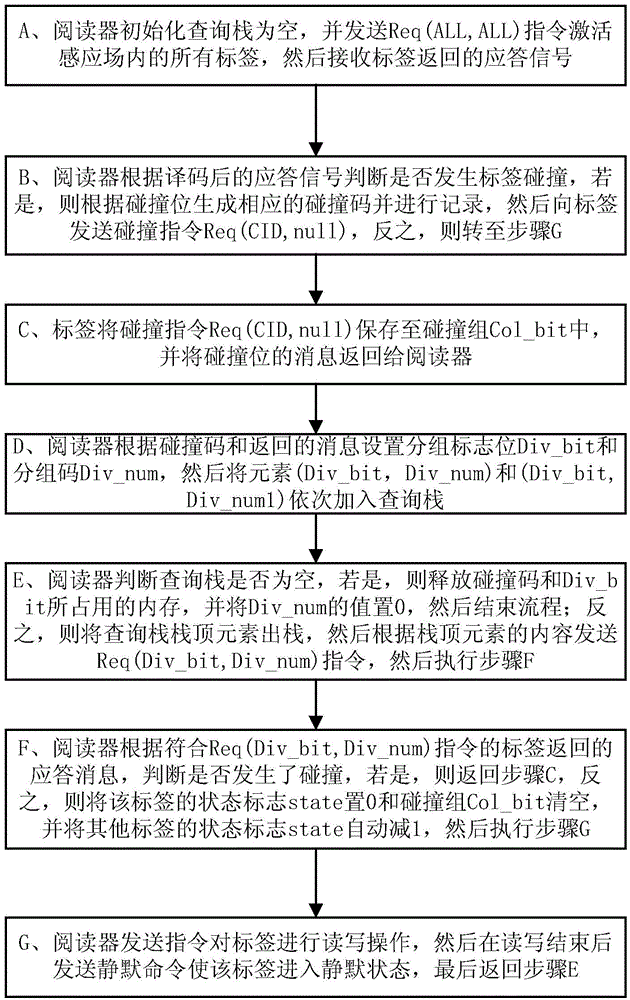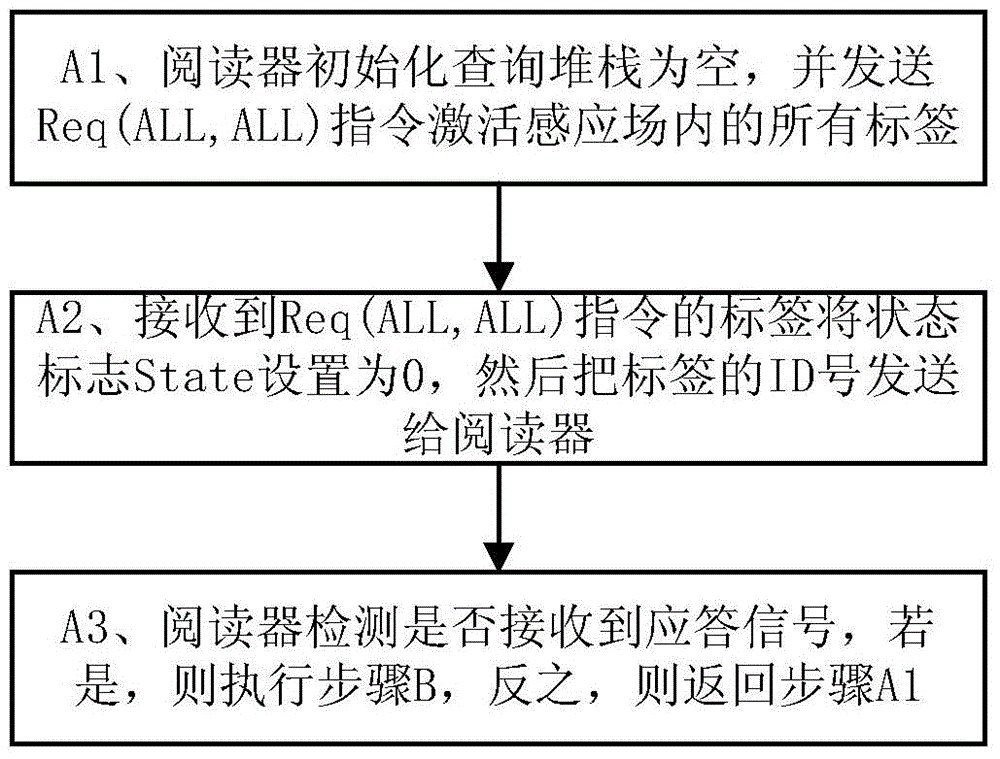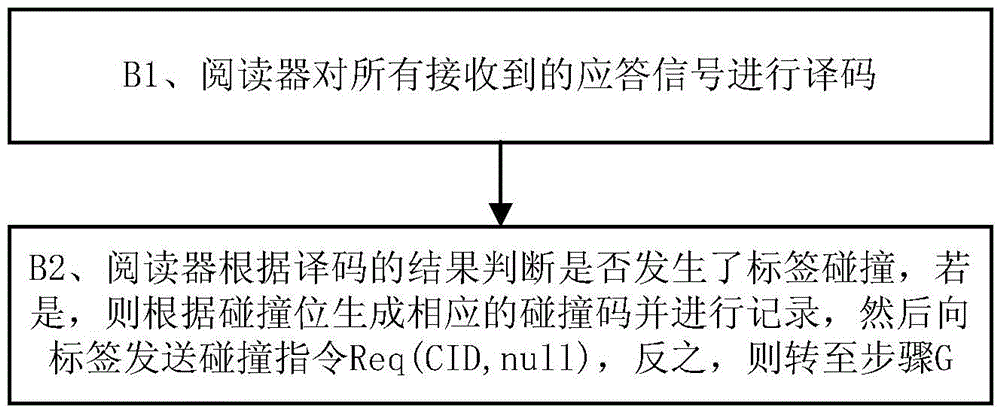RFID anti-collision method based on self-adaptive dividing mechanism
A grouping mechanism and anti-collision technology, which is applied in the field of radio frequency identification, can solve the problems of data collision, label collision, and no consideration of reducing the amount of communication data, so as to reduce the possibility, narrow the range of labels, and reduce the number of queries.
- Summary
- Abstract
- Description
- Claims
- Application Information
AI Technical Summary
Problems solved by technology
Method used
Image
Examples
no. 1 example
[0073] The reader of the present invention mainly implements the communication process with the tag and the anti-collision function in the RFID system, including four modules: an interface module, a preprocessing module, an anti-collision processing module and a post-identification processing module. The functions of these four modules are described below:
[0074] 1. Interface module
[0075] The interface module mainly refers to the system interface module. The system interface module is the interface between the reader and the background processor or other hardware, and is mainly used for communication coordination between the reader and other hardware.
[0076] 2. Preprocessing module
[0077] The preprocessing module can be further subdivided into:
[0078] 1. Synchronization module: mainly used for the reader to receive the tag response information for synchronous processing;
[0079] 2. Decoding module: mainly used to decode the message responded from the tag;
[0...
Embodiment 2
[0095] In this embodiment, 5 tags using 8-bit coded information are taken as an example, and combined with the attached Image 6The implementation process of the present invention is described.
[0096] Let the IDs of these five tags be: A: 00110101; B: 00111101; C: 01110101; D: 01011001; E: 00110001, then the specific implementation process of RFID anti-collision is as follows:
[0097] (1) The reader (Reader) issues the command Req(ALL, ALL) to activate all the tags (Tag) in the sensing field, and initialize the query stack (req_stack) to be empty; after the tag receives the command, it sends the tag ID to the Reader , and set the value of the state flag state of the label to 0. The ID decoded by the Reader is 0XX1XX01, and the collision bits are 6, 5, 3, and 2 bits ("X" represents a collision, corresponding to bits 0-7 from right to left), and the collision code col_num is set to 0XX1XX01. At this time, according to the CID value rules, the reader will send the message Re...
PUM
 Login to View More
Login to View More Abstract
Description
Claims
Application Information
 Login to View More
Login to View More - R&D
- Intellectual Property
- Life Sciences
- Materials
- Tech Scout
- Unparalleled Data Quality
- Higher Quality Content
- 60% Fewer Hallucinations
Browse by: Latest US Patents, China's latest patents, Technical Efficacy Thesaurus, Application Domain, Technology Topic, Popular Technical Reports.
© 2025 PatSnap. All rights reserved.Legal|Privacy policy|Modern Slavery Act Transparency Statement|Sitemap|About US| Contact US: help@patsnap.com



